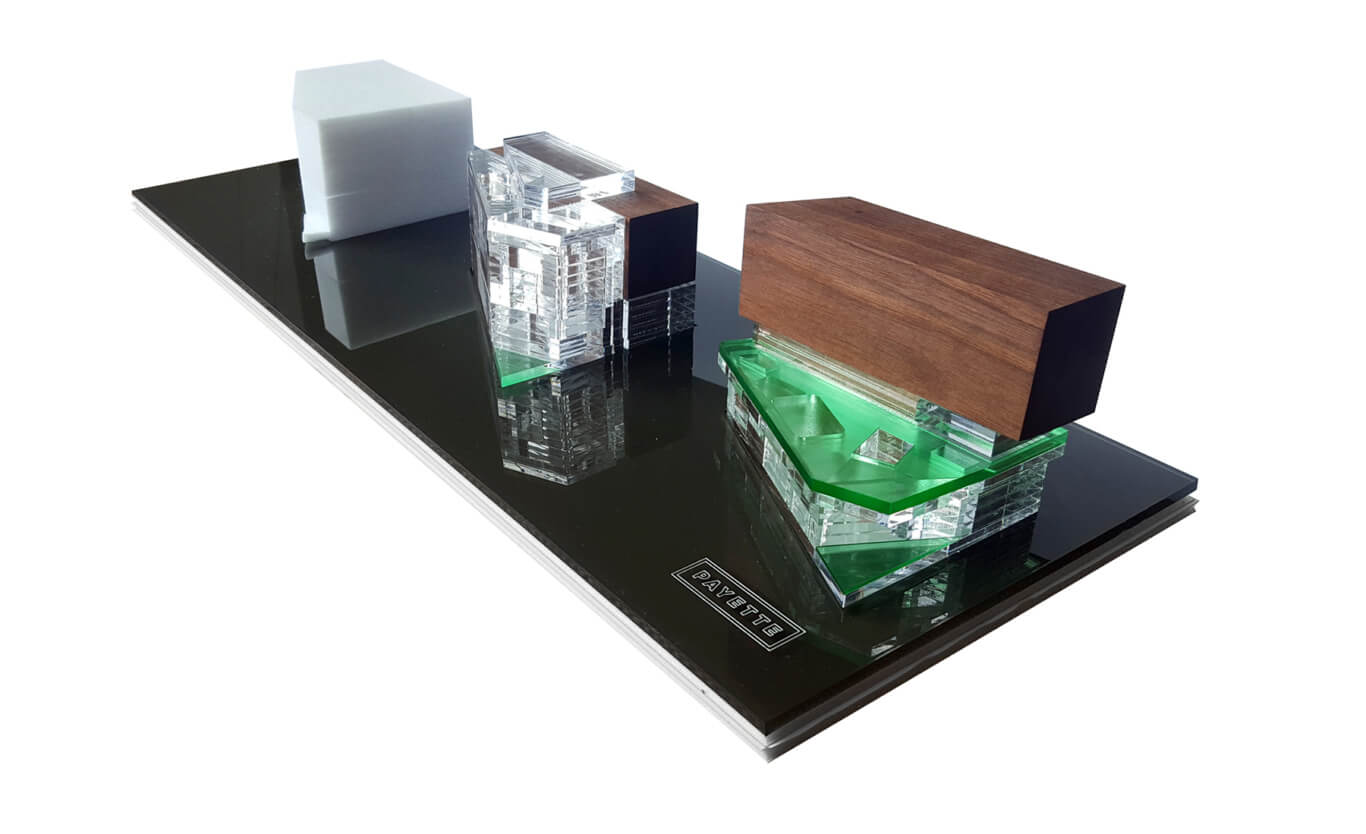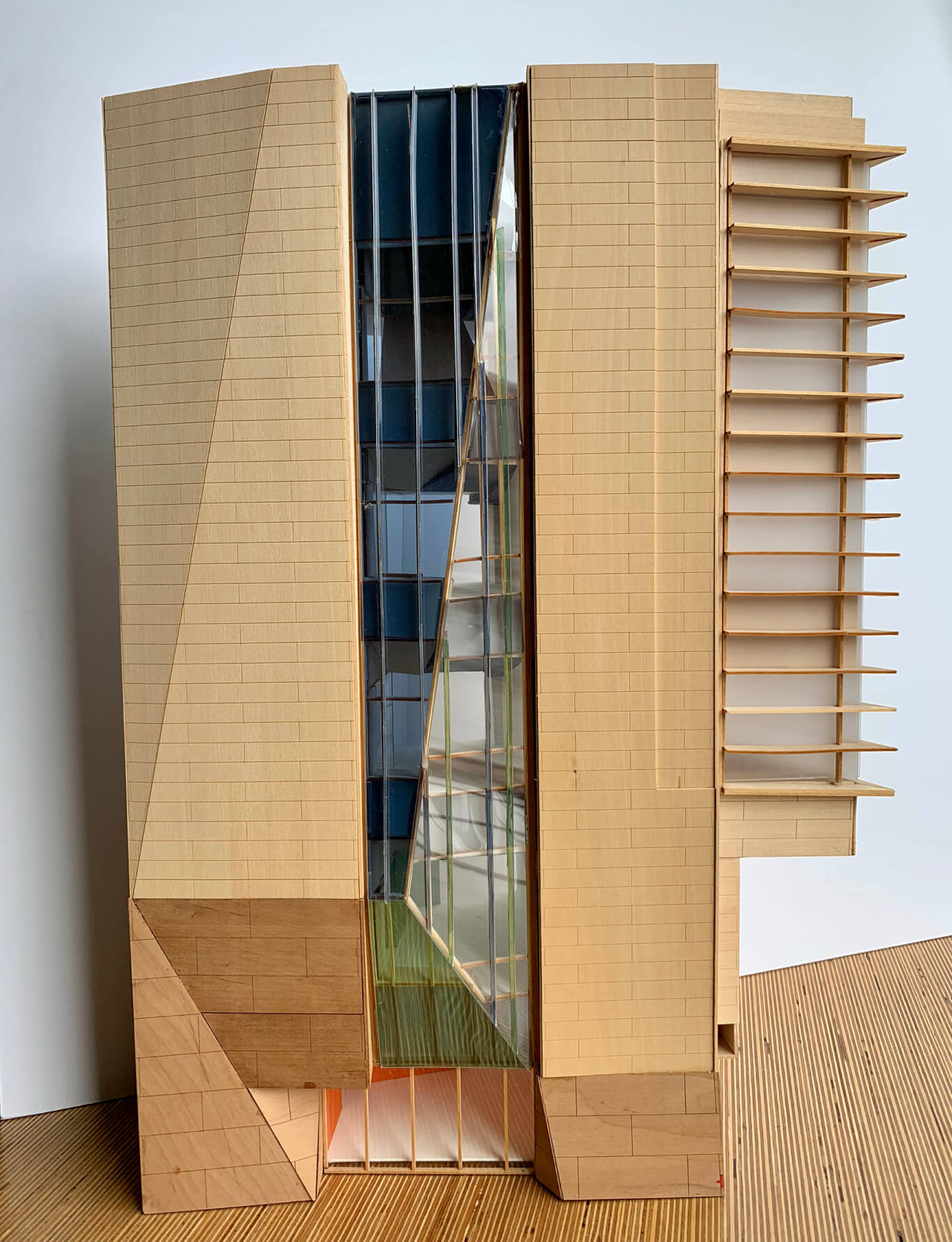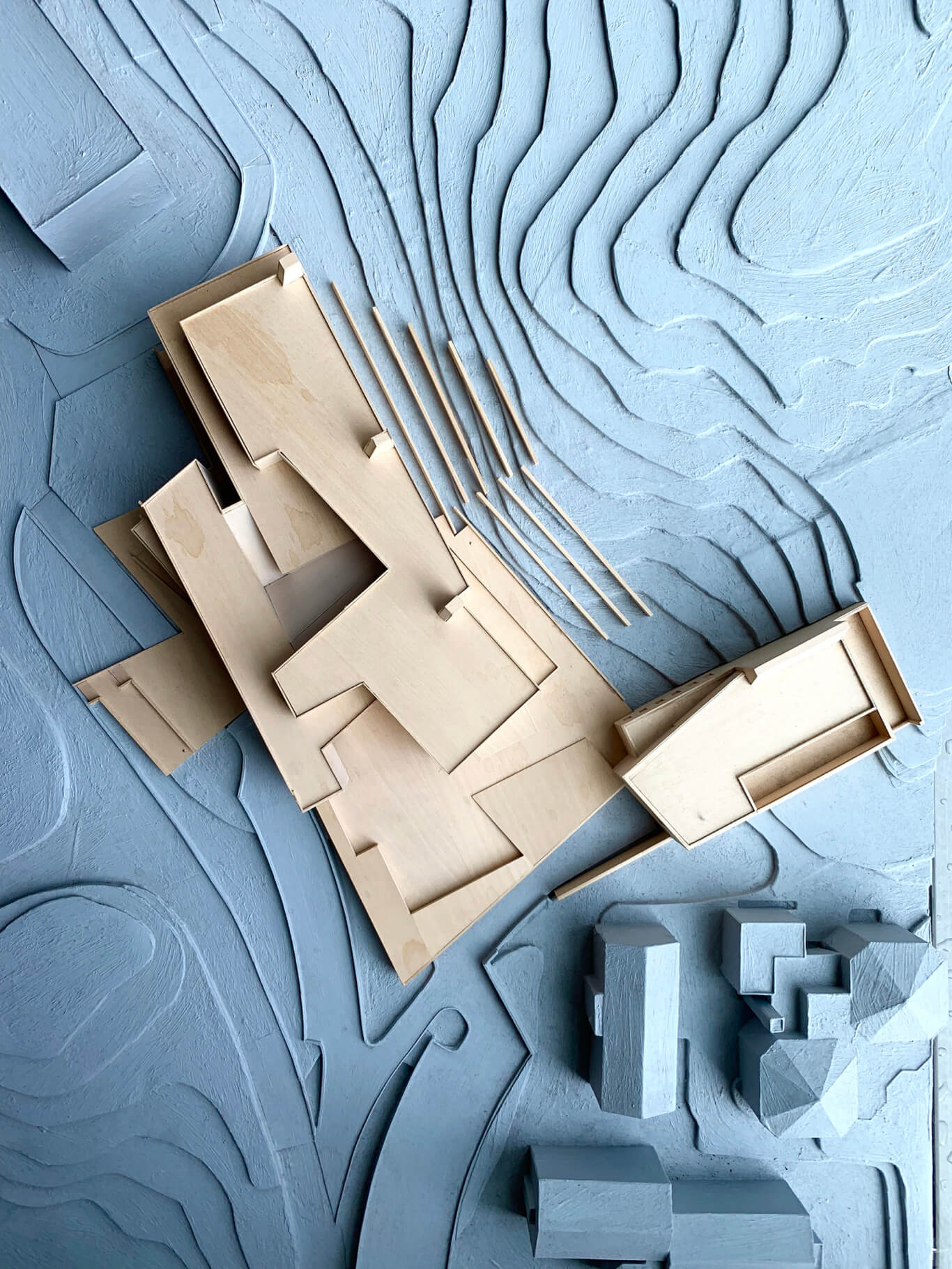Pitching a design to a client is one of the most important parts of the process. It’s crucial that the team and client both understand the design intent, and if they are not aligned, this stems from lack of clear communication of the concept. Consequently, models are often an efficient way to demonstrate design ideas.
Models are spatially more sophisticated and yet simpler to comprehend than a drawing. There are many aspects of a design that can be overly complicated to convey in a drawing that may be interesting for the architectural scholar, but illegible to the layman. In addition, it often requires the cooperation or integration of two or more drawings to express the same conceptual complexity that can be communicated by a model. A model’s variety of materials and introduction of three-dimensional solids, voids, opacities and textures enables various understandings and readings of the design.

The choice of materiality – its warms / cools, lightness / massiveness, smoothness / roughness – as well as the assembly of a model are important to generating appropriate readings. Acrylic is generally used to represent glass and transparency, but sometimes it’s better to stack acrylics as a solid block while at other times a hollow volume is a better choice. These different assembly methods manifest themselves drastically differently on the model – the former refracts light through its volume to create puzzling ephemeral qualities, while the latter creates a transparent threshold simply defining a void and perhaps what it contains. The same can be said of the use of wood: is the form generated from a larger mass via subtraction, a series of smaller masses assembled additively, or represented using veneers? Care should be taken in aligning the grain of wood, because it inherently generates a directionality and hierarchy within a model. Beyond this comes the choice of color or shade, which is important relative to the overall color palette and appropriately juxtaposing materials. While the choice of material is essential to the model, the crux of a model is its creator and their craft.

Lack of craft in a model is distracting and leads to a misreading of its concepts and in the end, a waste of time explaining irrelevant details, like in an overly complex drawing. Models are all in the details, but some details are more important than others and it’s vital to know where to spend your time. Perfecting the most noticeable edges that highlight the key parts of the design is worth your time. However, cleaning up the parts of the model that will be hidden within may be worth skipping. Know where people will be looking and focus on those areas, but do not skimp on the rest of the model, because you never know when someone will pick it up and flip it upside down. Sometimes a mistake on the face of a material can be hidden rather easily, but the edge is always important and noticeable. While perfection may not be noticed and appropriately appreciated, it highlights the design intent, whereas imperfections will likely be discovered. Flaws in representation can distract from the direction of the conversation.

Equally important to the appeal of the final product are the quality of the original material, its cutting, and finishing technique. A model should appear smooth and seamless visually and to the touch, unless the model is purposefully textured. While it’s a small detail, a well-considered model gives the object a higher sense of value and the client a further appreciation of your work. The process of sanding and finishing a model to give it the luster it deserves should take at least as long as it took to form the object – otherwise it hasn’t been done properly. In the end, these sorts of details are only refined as far as time and cost will allow. It’s useful to remember that there is always room for improvement, you can always learn from your mistakes, and to share this information with others so issues are less likely to recur.
Models are a mainstay in architectural practice and will always be a valuable form of representation. As AI advances and gives us new ways to experience design before construction, models lose a bit of territory in the field of representation. However, the experience of walking around, touching and picking up a model will never be supplanted.


